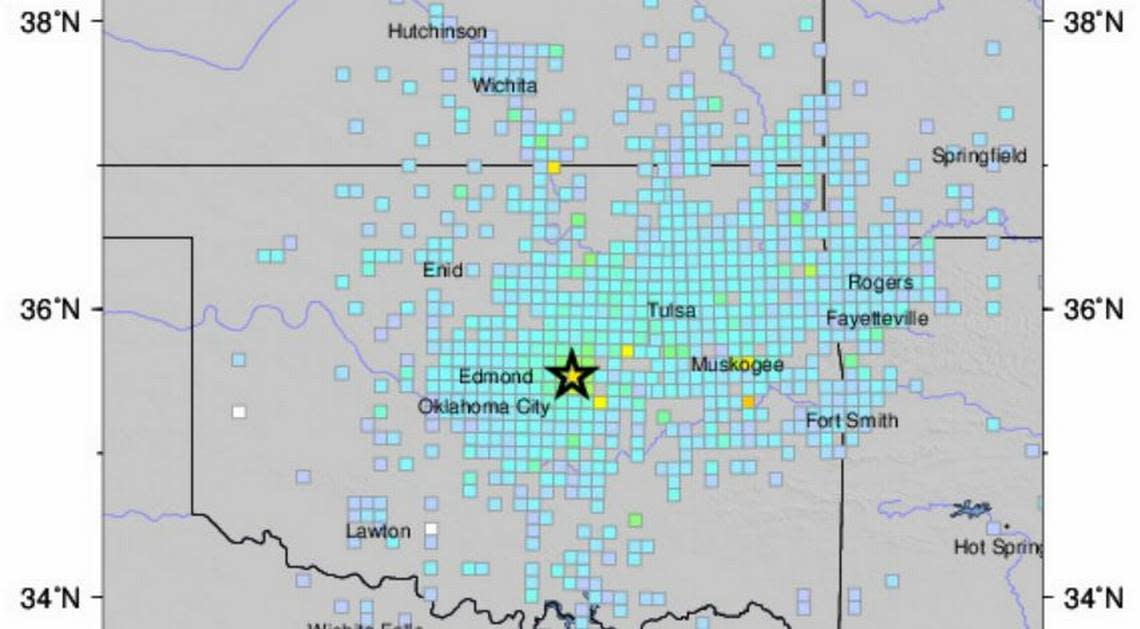5.1 magnitude earthquake in Oklahoma shakes Kansas too

A 5.1 magnitude earthquake shook central Oklahoma late Friday night and was felt over a 200-mile radius from Kansas to Texas and Arkansas, a scientist with the U.S. Geological Survey said.
More than 23,000 people reported feeling the quake to the USGS, including numerous reports from south central Kansas, said geophysicist Randy Baldwin at the National Earthquake Information Center in Golden, Colorado.
“It was significantly felt in Wichita and Hutchinson to the north,” Baldwin said.
The quake occurred at 11:24 p.m. Friday and the epicenter was about six miles northwest of Prague, Oklahoma — approximately 50 miles east of downtown Oklahoma City and 150 miles south-southeast of Wichita.
“It’s the same spot where there was a 5.6 in 2011,” Baldwin said.
Friday night’s quake was followed by at least a half-dozen aftershocks, “most in the 2 range, but there was one 3.5” Baldwin said.
The largest earthquake on record in Oklahoma was a 5.8-magnitude jolt near Pawnee in September of 2016.
A surge of quakes in Oklahoma and Kansas since 2009 has been linked to increased oil production in the region due to advances in horizontal drilling and “fracking,” a process of fracturing rock underground to free trapped pockets of oil. Fracking does not cause serious quakes on its own; the quakes actually result from underground disposal of billions of barrels of wastewater that is a by-product of oil drilling.
The water is injected into deep wells and spreads through rock fractures, lubricating and destabilizing rock formations far beneath the surface.
The water that comes up with extracted oil has been trapped underground for millions of years. It is extremely salty and polluted, and it is not considered economically feasible to treat and dispose of it above ground.
Both Kansas and Oklahoma have instituted programs to limit oilfield wastewater disposal in an effort to reduce earthquakes.

